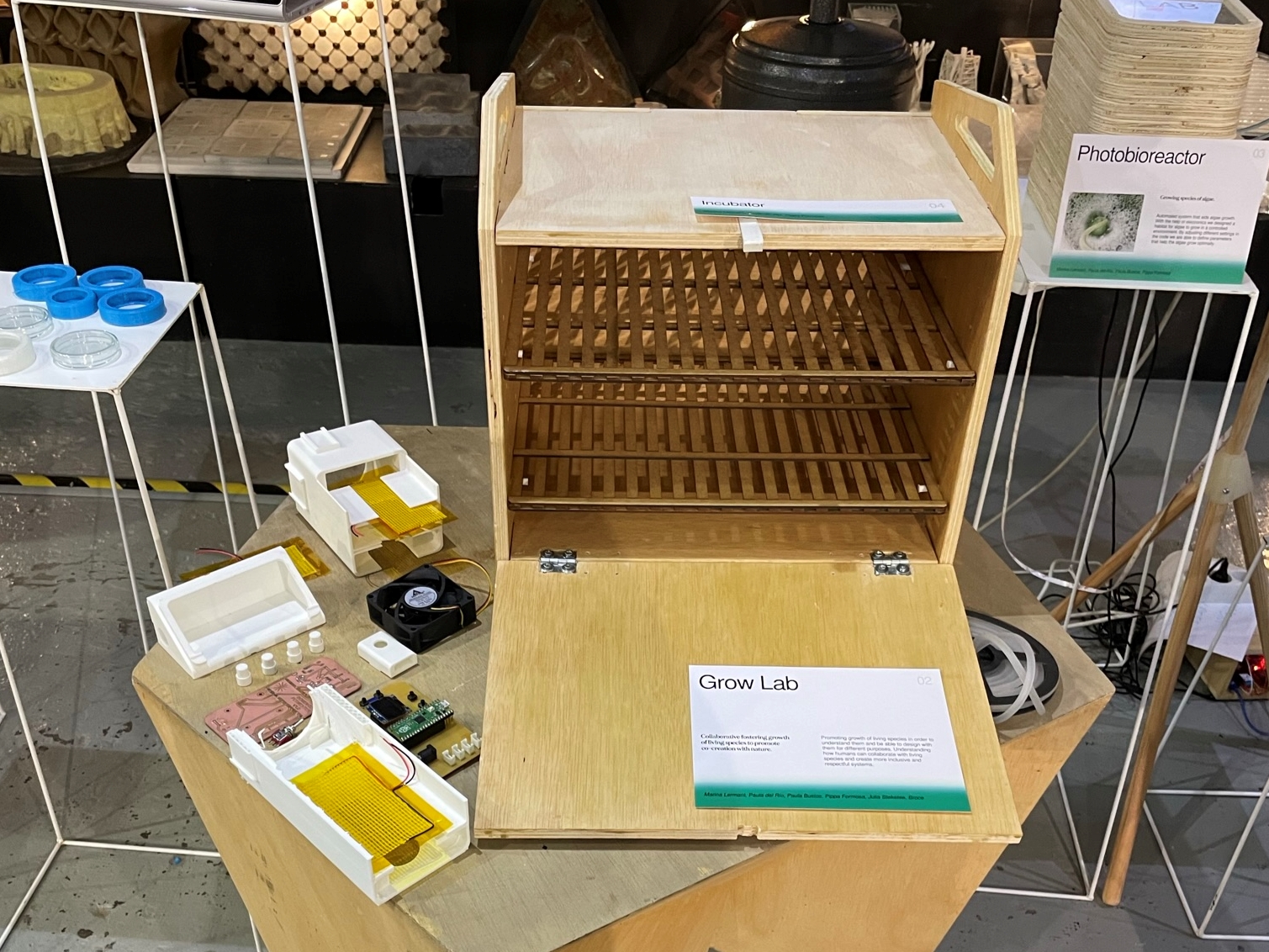Class
Studio
Date
25 February 2022 through term 2
Instructors & Collaborators
Oscar Tomico & Maud
Intervention 3
While navigating through what it is my project is, I began to want to work with living organisms more. While I still am interested in how waste can be used as a second life, I wanted to be experimenting with living organisms, particularly algae and bacteria. In order to use bacteria, I would need an incubator. After thinking about purchasing one and seeing that the one at IAAC was primarily meant to be used for fabricademy students, a project fell upon Pippa, Paula and I that we should make our own. We searched for DIY incubator, and got put in contact with Maud, who had recently started working at the fablab. She had started and was working on her own project/company called Domingo Club. The concept of her company is making growing tempeh more accessible and easy to do at home, including using the heat of your own body with a tempeh necklace. Pippa and I met with her and discussed the project. Since it was open source, Maud said she would be happy to share her design files with us, and it would be helpful for her to see other people replicating it to see what challenges or hurdles outsiders would experience while making it.
Through construction and fabrication of the incubator, I got the chance to put many new skills we have been learning this year into practice. Although at first I felt that it was not as valuable since we didn’t design the incubator itself, I see how still fully building it ourselves gave me an in-depth understanding of it. The build of the incubator included CNC milling the parts of the box and varnishing it, laser cutting the inside shelf pieces, milling the PCB, and soldering all the parts together. All of these things took much longer than anticipated even though we were following a pre-set design. Thankfully the fab lab and Maud were able to help us with any questions we had. The most problematic part of building the incubator was with soldering the PCB. After having it nearly finished, we realized that it had copper on both sides and therefore would be conductive everywhere. This meant we had to unsolder all of the pieces that went through all the way in order to (try to) scrape off the copper and re-solder. We attempted to do this, and saw that it was nearly impossible to remove the layer. Therefore, we had to start over and re-mill the PCB. It felt like an entire day’s work was lost with this, but we pressed on. The incubator may not be done by design dialogues, but we are well on our way to the first piece of the student-made bio lab in IAAC.
We also contacted Jessica Dias from Biobabes to have a discussion with her about it and get some tips and feedback for our projects. We asked her to tell us a bit more about biobabes and their work. She explained it as an ongoing project between her and another colleague. The main point in the conversation we had with her was that living organisms take time to develop, work with, and understand. That we couldn’t expect to yield results or outcomes exactly how we plan them because you never know how living organisms will act. This was a bit difficult to hear as we felt like we were on such a short timeline. However, I think it was important for us to take a step back and think about this fact.
